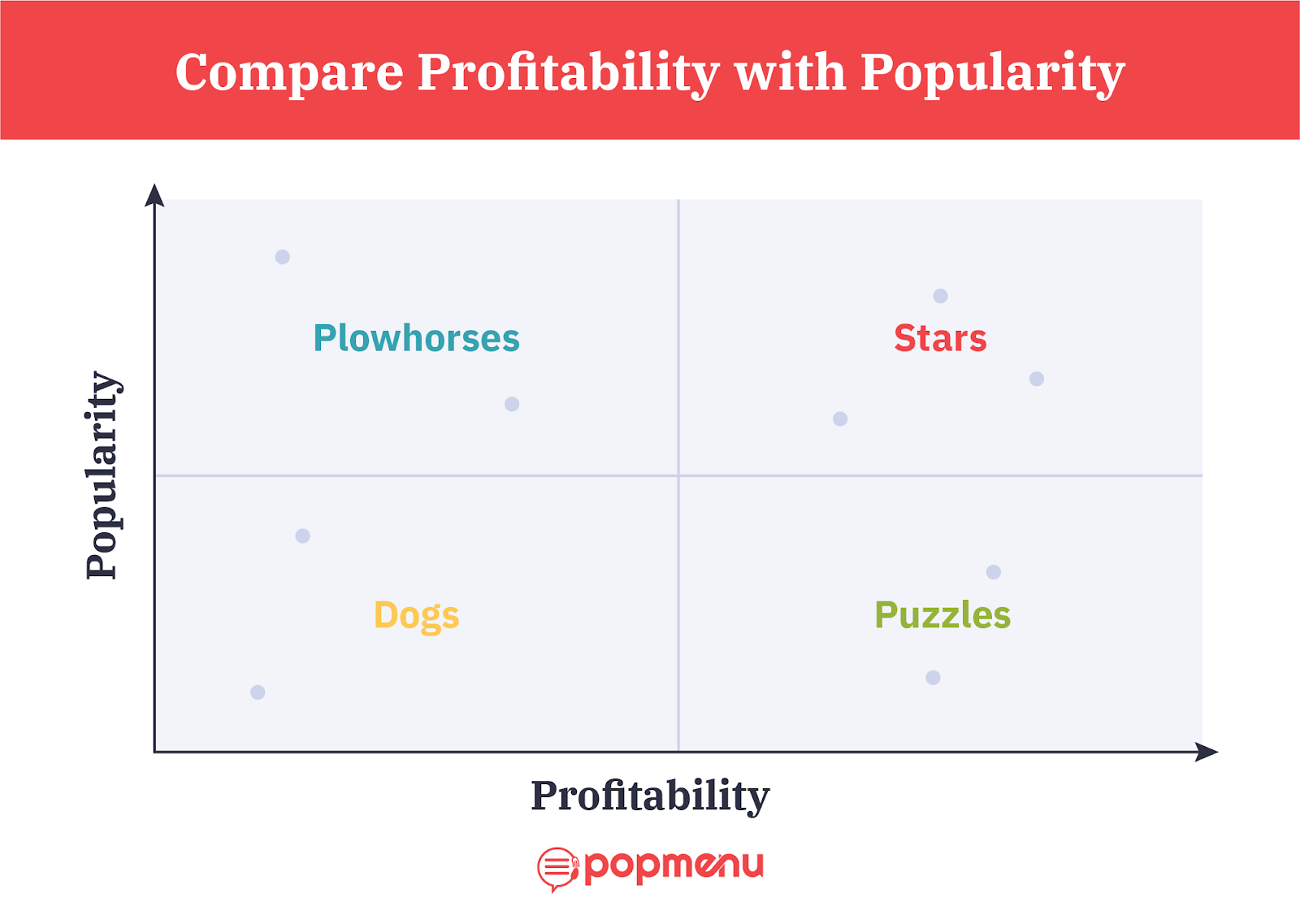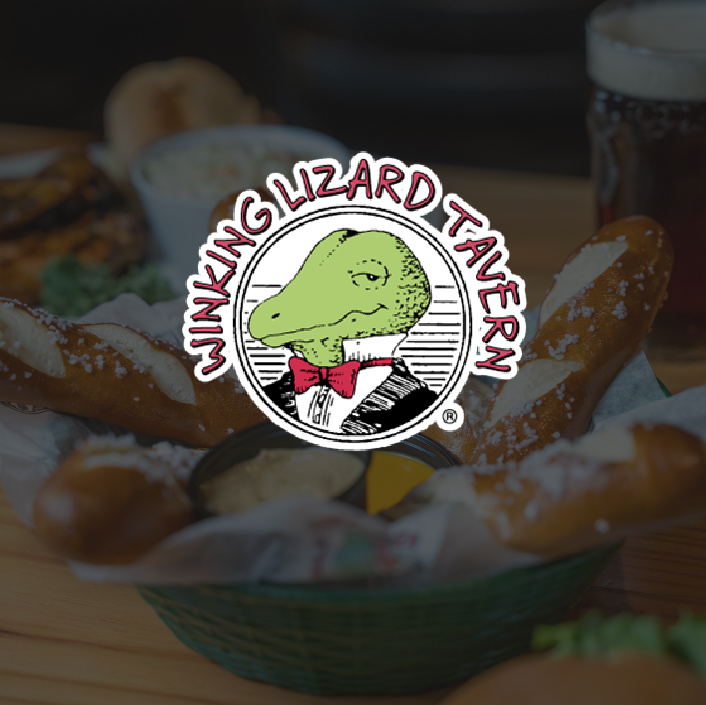
Menu engineering: Tips and tricks for building a restaurant menu that sells

Explore this content with AI
ChatGPT | Perplexity | Claude | Google AI | Grok
It probably isn’t. That’s where menu engineering comes in. Menu engineering uses simple psychological tricks to help restaurants encourage their guests to spend more or order certain dishes
Menu engineering is a complex-sounding term for something that’s actually pretty simple—it’s retooling the menu to maximize profit—that any restaurant owner can do. Read on to learn the basics—and how you can optimize your menu both online and in your dining room.
What Is Menu Engineering?
Menu engineering (sometimes called menu psychology) is the practice of analyzing and strategically designing your menu to maximize profits. Typically, restaurants that use menu engineering try to highlight and draw guests’ attention to their most profitable items.
Menu engineering combines design elements with analysis of the profitability and popularity of each dish, and allows you to fully optimize your menu to maximize revenue. In fact, studies have shown that restaurants that engineer their menus typically see a 10-15 percent increase in profits.
Before we get into the analysis part, let’s talk about some of the basics: Design elements you can use for your physical menus today to boost profits at your restaurant.
Menu Engineering Basics Every Restaurateur Should Know
Menu engineering can get complex, once you start calculating individual profit margins for every dish on your menu (more on that below). But there are also simple psychological tricks that any and all restaurant operators can use to help give profits a boost. Most of these have to do with how your physical menu is designed.
Eye Movements
Most humans have a tendency to move their eyes in certain patterns when looking at a page. Knowing these patterns can help you engineer your menu, because you can put daily specials or high-margin dishes in areas of the page where guests’ eyes are likely to land.

Another common eye movement trick is called the “golden triangle,” a rule that says most guests will focus first on the center of the page, and then move their attention in a triangle, first to the top right, then to the top left.

Descriptive Language
Descriptions of menu items are another element that can influence guest behavior. The tried and true method is using short, descriptive language that highlights the most mouthwatering things about a dish.
But you can also use menu descriptions that evoke nostalgia or humanize a dish you want to highlight—for example, “chocolate chip cookies” is an OK menu item. “Warm, freshly baked chocolate chip cookies” is better. But the best option would look something like this:
“Grandma’s Secret Chocolate Chip Cookies: Fresh from the oven, still warm, and oh so ooey and gooey.”
Photos
Polls show that photos in your dine-in menu evoke cheap, mass-produced food for many guests, which is why it’s best to avoid them. But for online menus guests use to place takeout and delivery orders, photos can help boost sales significantly.
Later on, we’ll talk about how menu engineering is different for online and in-person menus, and how restaurants can master both.
Length
There’s a psychological concept called “the paradox of choice.” It says that, when faced with too many possible choices, people tend to become worse at making decisions. For your menu, keep options limited—experts say each menu section should have no more than seven options. Consider having separate menus for lunch and dinner services so they can be even shorter.
Menu Pricing
A famous study from Cornell University shows many of the ways restaurants can change how pricing is displayed on their menus to influence guest behavior. Some of the simplest and most common ways are:
- Removing dollar signs ($) and decimals from your menu. The Cornell study showed guests tend to spend more when prices are displayed as a single, whole number.
- Listing prices in the same font and size as other menu text. This way, no attention is drawn to the price, and guests skim over it as they’re scanning the entire menu.
- Using decoy dishes. Let’s say your restaurant serves a pasta dish that has the highest profit margin on the menu. If that dish is the most expensive thing on the menu, guests will tend to shy away from ordering it. But if you add a more expensive “decoy” dish—say, a steak, which will cost more in ingredients and therefore have a lower profit margin for your restaurant—more guests will order the pasta dish because it will feel like a better value.
Highlighting
Ever seen a menu with a note or icon next to a dish indicating that it’s a “house specialty,” or “guest favorite?”
If your restaurant serves certain menu items you want to draw more guests’ attention toward, highlighting dishes this way is a proven strategy.
Colors
Finally, the way you use colors on your menu can influence guests’ feelings and behavior. Conventional wisdom says your menu’s color scheme should match your restaurant’s branding or decor, and that’s not wrong. But did you know that bright colors, like red, yellow, and orange, have been shown to trigger appetite? Incorporating these colors into your menu could encourage hungry guests to order appetizers before their entrees, for example.
How to Use Menu Engineering to Boost Your Restaurant Profits
Menu engineering isn’t just about psychology and menu design—it’s also about menu analysis. You can engineer your menu to be as profitable as possible. Here’s how.
Step 1: Determine Exact Food Cost
This first step takes time (and a fair amount of math), but it’s important. You need to determine the exact cost to produce one portion of every dish on your menu.
For example, let’s say you serve a chicken quesadilla. You get 48 tortillas for $38, 5 pounds of cheese for $15, and 40 pounds of chicken for $70.
A quesadilla takes one tortilla, 6 ounces of cheese, and 4 ounces of chicken. So the cost of this dish would be:
- Tortilla: $38 divided by 48 = 79 cents for one tortilla.
- Cheese: $15 divided by five = $3 per pound (16 ounces). $3 divided by 16 = 19 cents per ounce, times 6 = $1.13 for 6 ounces.
- Chicken: $70 divided by 40 = $1.75 per pound (16 ounces). $1.75 divided by 16 = 11 cents per ounce, times 4 = 44 cents for 4 ounces.
So the total cost for the quesadilla would be 79 cents plus $1.13 plus 44 cents, or $2.36.
Once you’ve determined the cost of ingredients for each dish, you want to find out each item’s contribution margin, or individual item profit. To do this, subtract the cost from the selling price for each dish. If the quesadilla is on your menu for $8, then the contribution margin would be $8 minus $2.36, or $5.64. That’s your profit margin for the quesadilla.

You can also calculate your food cost percentage (in this case, $2.36 is 29.5 percent of $8, so the profit margin for the quesadilla is 70.5 percent). Then, list all your menu items in order from highest profit margin to lowest.
Note that these costs are only for ingredients, and don’t include labor costs. The true cost of each dish in your restaurant would include labor costs, but for menu engineers, it’s not necessary to calculate.
Step 2: Determine Popularity
While you’re working on all that math, you can simultaneously collect data that will help you determine each menu item’s popularity with guests.
Choose a time period (somewhere between two weeks and a few months will work best) and keep a tally of every dish you sell during that time period. Then, make a list of all your menu items ordered from high popularity to low popularity.
Step 3: Compare Profitability with Popularity
In this step, you’ll want to make a matrix with four quadrants. Popularity of dishes will increase along the Y-axis, while profitability will increase along the X-axis. In menu engineering, the quadrants are typically labeled as Stars, Plowhorses, Puzzles, and Dogs. It should look like this:

Then, plot each of your menu items on the matrix.
Stars will be dishes that are ordered very often by guests, that don’t cost much for your restaurant to make.
Plowhorses are dishes that are extremely popular among guests, but don’t have particularly high margins for your restaurant.
Puzzles are dishes that have high profit margins, but aren’t ordered frequently by guests.
And finally, Dogs are dishes that are unpopular and don’t have high profitability.
Step 3: Redesign Your Menu
Using your matrix, you can make changes to your menu that should boost your overall bottom line.
Stars should stay just as they are. They’re popular and highly profitable, so there’s no need to change anything.
Plowhorses might stay as they are, or you might consider tweaking the recipe or the portion size to lower your item costs to make these dishes, thus increasing their profitability. Since these dishes are so popular with guests, try not to make big changes that guests will notice if they order these dishes frequently. Another option is to increase the menu price for these dishes.
Puzzles are good money makers, but they don’t get ordered often enough. Try rotating them as chef’s specials, or highlighting them on your menu to try to draw guests’ attention toward them and increase sales.
Dogs are unpopular and have low profitability. You can 86 all of them. You can replace them, but you might consider just removing them from your menu to lower the number of items you offer.
Step 4: Test and Assess
Once your new menu is complete, the work isn’t done quite yet—you need to continue to monitor metrics (like how many orders you sell for each dish) to see if your menu tweaks are working.
Over time, repeating the menu engineering process can help inform your decision making about your menu, new dishes, seasonal specials, and more. Restaurants that utilize menu engineering over time tend to increase profits by as much as 10-15 percent.
Online Menu Engineering: Visuals, Engagement, and More
Many restaurants make a common and understandable mistake: Once they spend all this time and effort engineering a great menu, they think it will work both in their dining room and on their website.
Unfortunately, that’s not the case. The most profitable menu in your dining room will look different from the most profitable menu on your website or a mobile food ordering app.
When guests look at a menu online—whether it’s because they’re looking for a restaurant to visit in-person or planning to place an order for pickup or delivery—they expect a different experience than they would have with a physical menu. For example, guests expect modern restaurants to have mobile-responsive menus, so they don’t have to pinch and zoom to view them on a smartphone screen.
Another big difference is pictures: You should avoid having too much food photography on an in-person menu, but studies show that for online menus, items with photos get more orders.
How do busy restaurateurs manage to create and maintain menus for both in-person and online guests? They use Popmenu.
Popmenu: Menu Engineering Online and In-Person
Popmenu is changing the restaurant industry with patented, one-of-a-kind menu technology. Our online menus create a new kind of experience for guests—one that encourages them to engage with your menu, not just read it.

And Popmenu’s Print Center makes it easy to take your online menu and turn it into a physical menu. Simple design tools and drag-and-drop modules make it easy to use all the menu engineering tricks we’ve covered in this article.
But that’s not all. Popmenu was created to be an all-in-one digital toolkit made just for restaurants. Your affordable monthly subscription will also include:
- A mobile-optimized website
- Automated marketing and remarketing tools
- Waitlisting
- Direct online ordering, delivery, and curbside pickup solutions
Popmenu is made to help modern restaurants own their entire digital relationship with guests—from their first visit to their final bite. Ready to learn more? Schedule a free demo today.





.jpeg)






